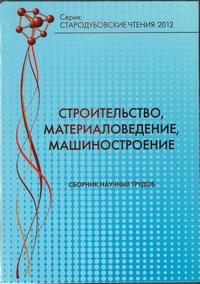Anisotropy of computationally tailored microstructures with negative poisson’s ratio.
Keywords:
Anisotropy of computationally tailored microstructures with negative poisson’s ratio.Abstract
In this paper a methodology is proposed based on a combination of the finite element method and a genetic algorithm to design microstructure of materials with negative Poisson’s ratio. The problem is formulated as an optimisation problem of finding microstructures with prescribed behavioural requirements. Different microstructures are generated and evolved using the genetic algorithm and the behaviour of each microstructure is analysed using the finite element method to evaluate its fitness in competition with other generated structures. It is shown that using the proposed methodology it is possible to obtain a wide range of auxetic microstructures each with different value of negative Poisson’s ratio. In addition the degree of anisotropy of each microstructure is monitored and recorded during the optimisation process and a procedure is employed to impose isotropy while auxetic microstructures are evolving.
References
Alderson, K. L. and Evans, K. E., 1992. The fabrication of microporous polyethylene having a negative Poisson’s ratio, Polymer, 333(30), 4435-4438.
Caddock, B. D. and Evans, K. E., 1989. Microporous materials with negative Poisson’s ratios: I. Microstructure and mechanical properties, Journal of Physics D: Applied Physics, 22(12), 1877-1882.
Gasper, N., Smith, C. W. and Evans, K. E., 2009. Auxetic behaviour and anisotropic heterogeneity, Acta Materialia, 57(3), 875-880.
Lakes, R. S., 1987. Foam structures with a negative Poisson’s ratio, Journal of Material Science, 235(4792), 1038-1040.
Lakes, R., 1993. Advances in negative Poisson’s ratio materials, Advanced Materials, 5(4), 293-296.
Love, A. E. H., 1944. A Treatise on the Mathematical Theory of Elasticity, Dover, New York, 4th edition.
Masters, I. G. and Evans, K. E., 1996. Models for the elastic deformation of honeycombs, Composite Structures, 35, 403-422.
Matsuoka, T., Yamamoto, S. and Takahara, M., 2001. Prediction of structures and mechanical properties of composites using a genetic algorithm and finite element method Journal of Materials Science 36(1) 27– 33.
Sigmund, O., 1995. Tailoring materials with prescribed elastic properties, Mechanics of Materials, 20(4), 351-368.
Williams, J. L. and Lewis, J. L., 1982. Properties and an anisotropic model of cancellous bone from the proximal tibial epiphyris, Journal of Biomechanical Engineering, 104(1) 50-56.
Yang, W., Li, Z., Shi, W., Xie, B. and Yang, M., 2004. Review on auxetic materials, Journal of Material Science, 39(10), 3269-3279.
Downloads
Published
Issue
Section
License
Редакція Видання категорично засуджує прояви плагіату в статтях та вживає всіх можливих заходів для його недопущення. Плагіат розглядається як форма порушення авторських прав і наукової етики.
При виявлені у статті більш ніж 25% запозиченого тексту без відповідних посилань та використання лапок, стаття кваліфікується як така, що містить плагіат. У цьому випадку стаття більше не розглядається редакцією, а автор отримує перше попередження.
Автори, в статтях яких повторно виявлено плагіат, не зможуть публікуватися в усіх журналах Видавництва ДВНЗ «Придніпровська державна академія будівництва та архітектури».
Автори, які публікуються у цьому журналі, погоджуються з наступними умовами:
- Автори залишають за собою право на авторство своєї роботи та передають журналу право першої публікації цієї роботи на умовах ліцензії Creative Commons Attribution License, котра дозволяє іншим особам вільно розповсюджувати опубліковану роботу з обов'язковим посиланням на авторів оригінальної роботи та першу публікацію роботи у цьому журналі.
- Автори мають право укладати самостійні додаткові угоди щодо неексклюзивного розповсюдження роботи у тому вигляді, в якому вона була опублікована цим журналом (наприклад, розміщувати роботу в електронному сховищі установи або публікувати у складі монографії), за умови збереження посилання на першу публікацію роботи у цьому журналі.
- Політика журналу дозволяє і заохочує розміщення авторами в мережі Інтернет (наприклад, у сховищах установ або на особистих веб-сайтах) рукопису роботи, як до подання цього рукопису до редакції, так і під час його редакційного опрацювання, оскільки це сприяє виникненню продуктивної наукової дискусії та позитивно позначається на оперативності та динаміці цитування опублікованої роботи (див. The Effect of Open Access).

